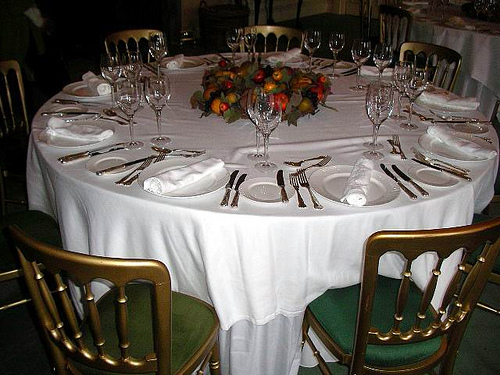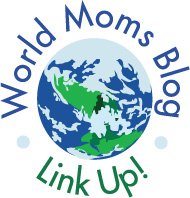I am participating in the Health Activist Writers Month Challenge, in which I publish a post every day for the month of April, based on health-related prompts.
April 19 – 5 dinner guests: Who are five people you’d love to have dinner with (living or deceased) and why?
When I have people over for dinner, it’s always a very casual affair, from the planning right down to the execution. It usually starts when my husband or I casually mentions someone we haven’t seen for a long time. We call that person up on an impulse and invite them to come over that evening. And since we’re inviting this person, well, we may just as well invite that person. The more, the merrier, and all that. With the phone calls made, the husband goes out to buy alcoholic beverages to suit our guests’ tastes. I go wading in our big freezer and emerge with a giant store-made lasagna, those ones that take about seventeen years to defrost. I throw together a salad and make garlic butter for the bread. I’m not much of a cook, but I make a mean garlic butter. The guests arrive and we all dispense as quickly as possible with the business of eating. I get the kids settled into bed and then spend the rest of the evening drinking wine, which let’s face it, was really the whole point of having the dinner party.
My fantasy dinner party would have to be more carefully planned, simply because the people I would want to invite are kind of busy. You can’t just call them up and ask them to show up at your house in the next two hours. You have to schedule their time, usually months in advance, and it’s a case of “your people calling their people”.
There wouldn’t be any frozen lasagna, and the whole thing would have some finesse to it. You can’t invite a guy like Nelson Mandela to your house and serve him frozen lasagna on the pretext of having a booze-up. No, I would hire a chef, a posh one who makes things normal people cannot pronounce and who knows what wine goes with what food.
My guests, assuming they all accepted the invitation (and, I mean, who wouldn’t?) would include the following five people:
Nelson Mandela. If you discriminated against most people throughout their early lives and then threw them into prison for twenty-seven years, they’d probably be a little bitter. It takes a very special kind of man to emerge from all of that and become a successful statesman, and to do it with grace, dignity and humility. Mandela is South Africa’s answer to the Royal Family, with one exception: everyone loves him, and with good reason.
What I have in common with him: we share a country of birth.
Terry Fox. The most iconic runner of all iconic runners, Terry Fox ran almost all the way across Canada with a prosthetic leg, while cancer was eating away at his body. His “Marathon of Hope” started a worldwide movement that continues to this day, more than thirty years after his death. If anyone had a reason to give up, it was him, and yet his absolute dedication to his cause and to his sport did not waver. His body was absolutely shattered, but his mind was super-hero strong.
What I have in common with him: I run for a cause.
Ed Mirvish. The world can be a peculiar place. Many rich people just want to get richer, regardless of the cost to anyone else. At the same time, a lot of the true humanitarians of the world are willing to give away what little they have for the betterment of their fellow man. Ed Mirvish was a rich old Canadian bloke with a landmark retail store and a near-monopoly on Toronto’s theatre industry. He had a truckload of money, and he kept giving stuff away to people who really needed it. While many rich people and corporations donate to charity for the purpose of making themselves look good in the public eye, Ed Mirvish did it because he really cared. You gotta love a guy who stands around handing out free turkeys to people who cannot afford Thanksgiving dinner – an annual tradition that has been continued in his memory.
What I have in common with him: I care deeply about making the world a better place.
Drew Barrymore. I’ve never been big on celebrities, but I confess to being totally in awe of Drew Barrymore. Like many people, I first saw her as the adorable child star in E.T. She shot to stardom so spectacularly as a child that her descent into a lifestyle of substance abuse almost seemed inevitable. It would have been so easy for her to live her life in the tabloid media by virtue of her addictions, but instead she went to rehab, sorted out her life, and established herself as an actress to be reckoned with.
What I have in common with her: I have overcome some intense challenges of my own – albeit ones of a different nature – instead of drowning in the events of the past.
Temple Grandin’s mother. Temple Grandin was a child with autism in the 1950’s – a time when autism was barely understood, much less known. She is now a highly successful adult, with a PhD in animal sciences. She done a lot of groundbreaking work in fields relating to animal welfare, and she is an outspoken autism advocate and educator. She puts much of her success down to her mother, who offered her unfailing support and mentoring throughout her childhood. It is a challenge to raise a child with autism in today’s world of IBI therapy and online support groups and autism advocacy everywhere. I cannot imagine what it must have been like for a mom back then, with far less knowledge and support to draw on.
What I have in common with her: I am the parent of a child with autism, who I would move heaven and earth for.
Who would be at your dinner party and why?
(Photo credit: http://www.flickr.com/photos/lisa_nichols/3288476050/. This picture has a creative commons attribution license.)











